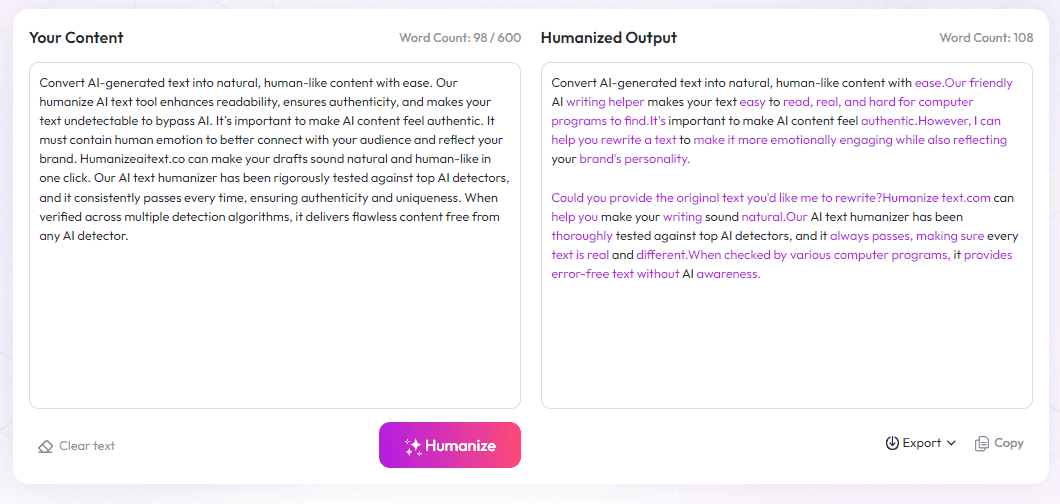Table of Contents
Great news! Being a beta reader can be both fun and a bit nerve-wracking, especially knowing what to focus on and how to help. If you're clear about what the author needs and stay honest and respectful, your feedback becomes a real gift. Stick around, and I’ll give you simple tips on how to handle your responsibilities, stay organized, and keep the process smooth—so everyone wins. Keep reading, and you'll feel confident sharing your insights in no time.
Key Takeaways
Key Takeaways
- Beta readers should give honest, specific feedback on plot, characters, pacing, and clarity to help improve the story.
- Understand what kind of feedback the author wants and how to deliver it—using comments, notes, or track changes.
- Organize notes clearly, separating story issues from grammar, and include examples for better understanding.
- Set clear expectations with deadlines, and communicate if you need more time or face issues.
- Balance feedback by highlighting strengths and suggesting improvements kindly, without rewriting the story.
- Be respectful, maintain confidentiality, and stick to the agreed scope—beta reading isn’t editing, but enhancing story clarity.
- Most beta reading is voluntary, but detailed feedback can lead to paid opportunities earning up to a few cents per word.
- Using 2 to 12 beta readers provides diverse perspectives; fewer means focused insights, more can be overwhelming.
- Encourage full participation with reminders, gratitude, and small incentives, replacing members if needed.
- Use effective tools to track and organize feedback, making revision manageable and productive.

A beta reader's main job is to read a draft manuscript before it hits the shelves and give honest, helpful feedback.
They identify strengths and weaknesses in plot, character development, pacing, and clarity, guiding the author toward a stronger final product.
To do this effectively, beta readers should first understand what kind of feedback the author needs—whether it's big-picture insights or detailed edits.
It's also crucial to ask how the author prefers to receive feedback, such as through comments, track changes, or notes, to ensure clarity and usefulness.
Clear communication from the start helps set expectations and makes the review process smoother for both parties.
Beta readers often work with a handful of feedback guides or checklists, focusing on key story elements like plot flow, character arcs, dialogue authenticity, and setting details.
Using these guides ensures you cover important aspects and provide actionable notes, rather than vague impressions.
Notes should be specific, with examples when possible, so the author can easily see exactly what needs attention.
Keep in mind that most beta readers do this voluntarily—about 70% do it for free, though some earn from $0.01 to $0.03 per word for detailed feedback.
Paid opportunities are growing as authors seek more structured, in-depth critiques, with some experienced beta readers earning up to $150 per manuscript.
Typically, authors send their manuscripts to 2 to 12 beta readers, understanding that not everyone will complete or respond with feedback—often only one-third to half will finish.
To maximize your helpfulness and keep the process on track, organize your notes, track feedback, and separate comments on grammar from story content unless asked otherwise.
Being honest and respectful is essential—highlight what works well, point out confusing sections or inconsistencies with specific examples, and report sensitive content carefully.
Always stick to agreed deadlines, usually around 2 to 4 weeks, and communicate promptly if you need more time or encounter issues.
Remember, your goal isn't to rewrite or alter the story but to help refine the author’s vision with constructive suggestions.
Offering suggestions rather than demands keeps the feedback positive and collaborative.
Finally, maintaining professionalism and respecting the author's privacy builds trust and ensures a smooth review process — never share the manuscript without permission and stay polite at all times.
For more insights on effective beta reading, check out guides like how to be a beta reader.

9. Understand the Compensation and Feedback Dynamics
While many beta readers volunteer their time, some receive compensation ranging from a few cents per word to a full payment per manuscript.
Paid beta readers often earn between $0.01 and $0.03 per word for detailed feedback, especially for in-depth critiques.
Knowing the typical compensation helps you gauge the expectations and prepare for potential paid opportunities.
Most beta readers (around 70%) work for free, motivated by a love of reading and helping authors improve their craft, but about 30% earn money or perks.
Authors usually send their manuscripts to 2-12 beta readers, understanding only about one-third to one-half will complete their feedback.
Managing expectations is key—don’t be discouraged if some participants don’t finish or respond.
Remember, providing detailed and actionable feedback can increase your chances of earning, so be sure to highlight specific points and examples.
Paying attention to the feedback process helps you build a good reputation, which can lead to more paid opportunities later.
10. How Many Beta Readers Are Ideal?
Using between 2 and 12 beta readers is common practice; fewer might miss diverse perspectives, while too many can make consolidating feedback tricky.
One or two readers can give you focused insights, but spreading feedback across 4-6 readers usually provides more balanced views.
Having a small team helps keep the feedback manageable and allows for more meaningful conversations about the story.
If you're uncertain, consider starting with 3-5 beta readers and expanding as needed based on your project's scope.
Some authors prefer a mix—one thorough critic plus a couple of casual readers—to get different angles on the story.
Remember, the quality of feedback matters more than quantity, so select readers who understand your genre and style.
11. Encourage Complete Participation
Since only about a third to half of accepted beta readers finish their feedback, it’s smart to set clear expectations upfront.
Send gentle reminders as the deadline approaches to motivate your reviewers to deliver on time.
Offering small incentives, like acknowledgment in the book or a thank-you note, can boost completion rates.
Be transparent about your timeline and check in politely if someone seems behind schedule.
If someone drops out, don’t hesitate to replace them to maintain a healthy pool of feedback providers.
Clear communication and appreciation go a long way in ensuring a smoother process and full participation.
12. How to Handle and Organize Feedback Effectively
Keep your notes organized—use spreadsheets, forms, or dedicated files to separate storyline comments from grammar notes.
Color coding or categorizing feedback (like plot, character, pacing) can help you identify common issues faster.
Be specific and include examples when pointing out areas for improvement—vague comments aren’t very helpful.
Create a system to track which suggestions you've addressed and which still need attention for clarity and consistency.
This method prevents feedback from becoming overwhelming and ensures you don’t miss important insights.
Using tools like Google Sheets, Trello, or dedicated writing software can streamline your organization process.
13. Recognize the Limits of Beta Feedback
While beta readers provide valuable insights, remember they are not professional editors or copywriters unless explicitly contracted as such.
Their role is to identify story issues, overall flow, character consistency, and reader experience, not to perfect grammar or style unless asked.
Focusing on big-picture feedback helps prevent getting bogged down in minute details unless your process specifically includes editing.
Separate developmental feedback from copy editing to keep your revision process manageable.
Consider hiring professional editors for polishing the manuscript once the beta feedback has been incorporated.
14. How to Use Feedback to Refine Your Manuscript
After gathering all comments, review the common themes and prioritize the necessary changes.
Don’t try to implement every suggestion—decide what fits your story and voice best.
Create a revision plan that addresses major issues first, then fine-tunes details later.
Keep the original tone and intent in mind—use feedback as guidance, not rules.
Incorporating diverse feedback can help you see your story from multiple angles and improve its overall quality.
Remember, the goal is to make your story clearer and more engaging while staying true to your vision.
15. Final Tips and Best Practices for Beta Reading
Always be clear about your expectations and available for follow-up questions from the author.
Respect deadlines, and if you need more time, communicate early and politely.
Offer balanced feedback—highlight strengths as well as areas for improvement.
Stay respectful and constructive, avoiding harsh critiques or dismissive language.
Keep your notes professional and private, never sharing the manuscript or feedback without permission.
Think of beta reading as a collaboration—you're helping the author polish their work, not rewriting it for them.
Finally, a good beta reader is not just a critic but a helpful partner in the creative process.
FAQs
Focus on major elements like plot, characters, pacing, and clarity. Use checklists or questions to guide your review and be specific with examples to help the author improve key story aspects.
Provide honest, constructive comments that highlight strengths and suggest improvements. Be clear, respectful, and offer specific examples without rewriting or taking over the author's voice.
Use spreadsheets or forms to track comments and separate notes on grammar from content. Structuring your feedback ensures clarity and makes it easier for the author to review your comments.
Remember your role is to support the author's vision, offering suggestions rather than making changes or rewriting. Respect their work and focus on helping improve the story according to their goals.



